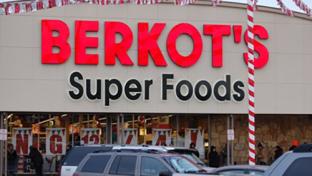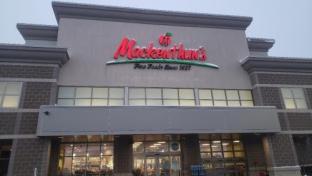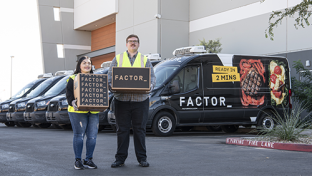How Small and Regional Grocers Can Compete With Big-Box Retailers

Small and regional grocers have big expectations to fill to keep up with the competition. Today’s consumers want it all – an efficient, personalized experience, regardless of their needs or a retailer’s size.
Consolidation has produced mega-players, not to mention potential mergers, like Kroger and Albertsons, the country’s two largest grocery chains. Add in German grocers Lidl and ALDI, both of which offer quality products at low costs, plus online retailers like Amazon encroaching upon the grocery space, and competing in today’s market is tough.
How can small and regional grocers continue attracting customers in this sea of unprecedented competition? By creating engaging, convenient experiences that entice shoppers into their stores and onto their websites and apps. Specifically, technology will enable them to compete by providing personalized loyalty offers and experiences, leveraging multiple checkout touchpoints and modalities to reduce friction in the checkout process, and quickly integrating innovations into their stores to provide differentiation and cost efficiency.
Small and regional grocers can enhance the customer and associate experience by providing some, if not all, of these services while improving the bottom line.
Bringing Delivery Into the Fold
Grocery delivery revenue in the United States alone is expected to rise to $183 billion in 2023. Over the next four years, delivery is projected to reach nearly $365 billion. Busy shoppers with long work hours appreciate the convenience of being able to skip store trips, shop online and have groceries delivered to their doorsteps.
As this service expands, customers’ habits are changing as they try different types of delivery that include next- or same-day delivery, farm delivery, meal-kit delivery, and even curbside pickup. Adopting a range of these services helps grocery retailers increase sales and compete with big-box grocers.
Prevailing Over Digital Loyalty Program Challenges
Loyalty programs benefit shoppers and grocers alike. They provide customers with personalized offers and lower prices while giving retailers data to help with greater retention and higher spend. Although these programs deliver grocers insights to offer more value to their shoppers, common challenges exist, including:
- Lack of customer engagement
- Subpar communication
- Poor data visibility without key integrations
- Confusing ROI measurement
- Complicated metrics
To overcome these pain points, grocers should adopt the right systems to reach their specific loyalty program goals. Revamping loyalty programs, if they’re already in place, is also important to enhance customer relationships. Personalization, gamification and social media integration in loyalty programs help ensure user engagement and experience. For example, analyzing customer data can provide insights into customers’ shopping habits, enabling grocers to build unique customer profiles and incentivize their audience through customized offers based on purchasing history.
Remember, when digital loyalty programs don’t run smoothly, they can damage connections with customers. When you’re building or revamping a digital loyalty program, make sure to also factor in technical support and maintenance.
Enhancing the Operating Experience
Without an effective modern-day store platform, operations and customer experience are likely not optimized as they should be. Relying on outdated technology in-store can make even minor changes costly; create uncertainty about when a point of sale (POS) will be up and running; create silos of vendors, tech and architecture; and more, ultimately hurting customer and employee experience.
Alternatively, all components of a store’s technology should be connected. For example, today’s POS should be connected and communicate in real time with a store’s overarching commerce platform. It should be able to “talk” with everything from the retailer’s digital inventory lists and customer loyalty programs to the retailer’s analytics and reporting applications. Interconnected POS systems deliver real-time business insights to store team members and give store managers and executives full control and oversight of stores.
Small and regional grocers have options that allow for growth and evolving operations. Grocery retailers can start with revitalizing any legacy POS with key business services, and then move to virtualizing and reusing infrastructure and apps to plug into a platform. Once that’s accomplished, the retailer will be able to easily update its POS and commerce platform as needed.
Providing Options Through Self-Checkouts
Self-checkout gained widespread popularity during the pandemic by limiting customer-employee contact and providing greater convenience. Today, with an ongoing labor shortage, self-checkout lanes enable grocers to have fewer cashiers on hand and help shoppers with smaller baskets pay for their goods quickly. Most grocery shoppers view long lines as limiting. In fact, 65% of them said that self-checkout helps them avoid long lines.
The benefits of self-checkouts extend beyond time-pressed customers who loathe these lines. Employees who might otherwise stand behind a cash register can perform tasks like restocking items, greeting customers or even walking them to a specific aisle. Allowing employees time for tasks like these will enhance customers’ overall happiness with their shopping experience.
Changing With the Times
Local and regional grocers can have a leg up on their larger counterparts. They are more likely to provide local, homegrown goods or provide consumables and other items to a niche crowd that appreciates their uniqueness.
By adopting and implementing new technologies, they can have it all: that small, hometown feel and the ability to keep up with modern-day consumer and employee expectations.
The possibilities that technology provides are nearly limitless, so stay in the game by embracing them.
[Read more: "How These Top Regionals Learned to Thrive in Any Competitive Landscape"]







